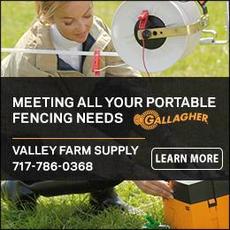To properly install your fence controller, follow these steps:
STEP 1: Grounding Instructions
Ensure that the controller is properly grounded to reduce the risk of electrical shock. AC line operated controllers come with a polarized 2-blade attachment plug for use on a 120-volt circuit. Insert the plug into an appropriate outlet that complies with local codes and ordinances. The grounding of this product is achieved through a ground rod connected to the fence controller output ground terminal. It is important to have a well-grounded fence controller to avoid high electric shock currents on the electrified fence. If the plug provided with the controller does not fit the outlet, consult a qualified electrician to install a proper outlet. If you need to use an extension cord, only use a polarized extension cord that can accept the plug for the unit. Replace any damaged cords.
STEP 2: Installation of Fence Controller
Install the fence controller under cover and protect all electrical connections from moisture. The fence controller lead-out wire carries voltage from the fence terminal to the fence. Use insulated cable specifically manufactured for electric fencing, with a wire gauge of 10 to 14 and insulation rated from 20,000 volts. Do not use common electrical wiring as it is only rated for 600 volts.
STEP 3: Grounding
Install at least one 6 ft. galvanized or copper ground rod within 20 ft. of the fence controller. Use a ground rod clamp to attach the insulated ground wire to the ground rod, ensuring that the clamp bites into the rod and ground wire securely. The ground wire should have a gauge of 10 to 14 and insulation rated from 600V to 20,000 volts. For optimal results, install three ground rods into the earth, each 6 ft. deep and spaced 10 ft. apart. If possible, choose areas with constant moisture for ground rod installation.
STEP 4: Placement and Connections
Avoid installing ground rods within 50 ft. of a utility ground rod, buried telephone line, or buried water-line to prevent picking up stray voltage. Stray voltage can be identified if you experience pulsing shocks from water spigots, water tanks, or if you hear the pulse of the fence controller in your phone, television, or radio. Ensure proper connections by using wire clamps, wire connectors, and proper splices as depicted in the drawings. It is important to make good connections to prevent corrosion and reduce power loss on the fence. Use high-quality insulators, gate handles, and insulator wrap with UV inhibitors for your fence. If you are using metal fence posts, ensure that the fence wires do not touch the posts. Alternatively, consider using specific types of wood posts designed for electric fence use without insulators.
Please note that these instructions are essential for the proper installation and functioning of your fence controller.





